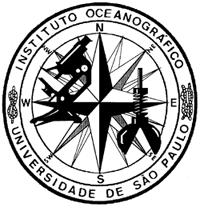Current work in benthic ecology highlights the importance of the temporal component of ecological variation for distribution and abundance of organisms. However, this approach is limited by the difficulty in separating and measure the constituents of such variation. The present study aims to separate and identify the environmental and temporal components of ecological variation in the abundance of the benthic invertebrate community from the São Sebastião Channel, southeastern Brazil, by canonical correspondence analysis. The area is seasonally submitted to the intrusion of a cold and saline water mass, an important factor influencing benthic communities. The composition and abundance of the megafauna were investigated at five sites from November 1993 to August 1994. A total of 93 species were collected. Average density reached 187 individuals per catch with highest numbers in summer. A striking difference in species composition and abundance was observed in the catches through the year and the results suggested a different structure of the assemblages for each season. Four independent components of the species variation could be separated and identified: pure environmental, pure temporal, environmental with temporal structure and undetermined. The large amount of environmental variation is related to sandy bottoms and depth influence, whereas the time factor can be interpreted as both the seasonal intrusion of the South Atlantic Central Water and the biological cycles of some key-species.
Species variation; Temporal variation; Megabenthos; Correspondence analysis







